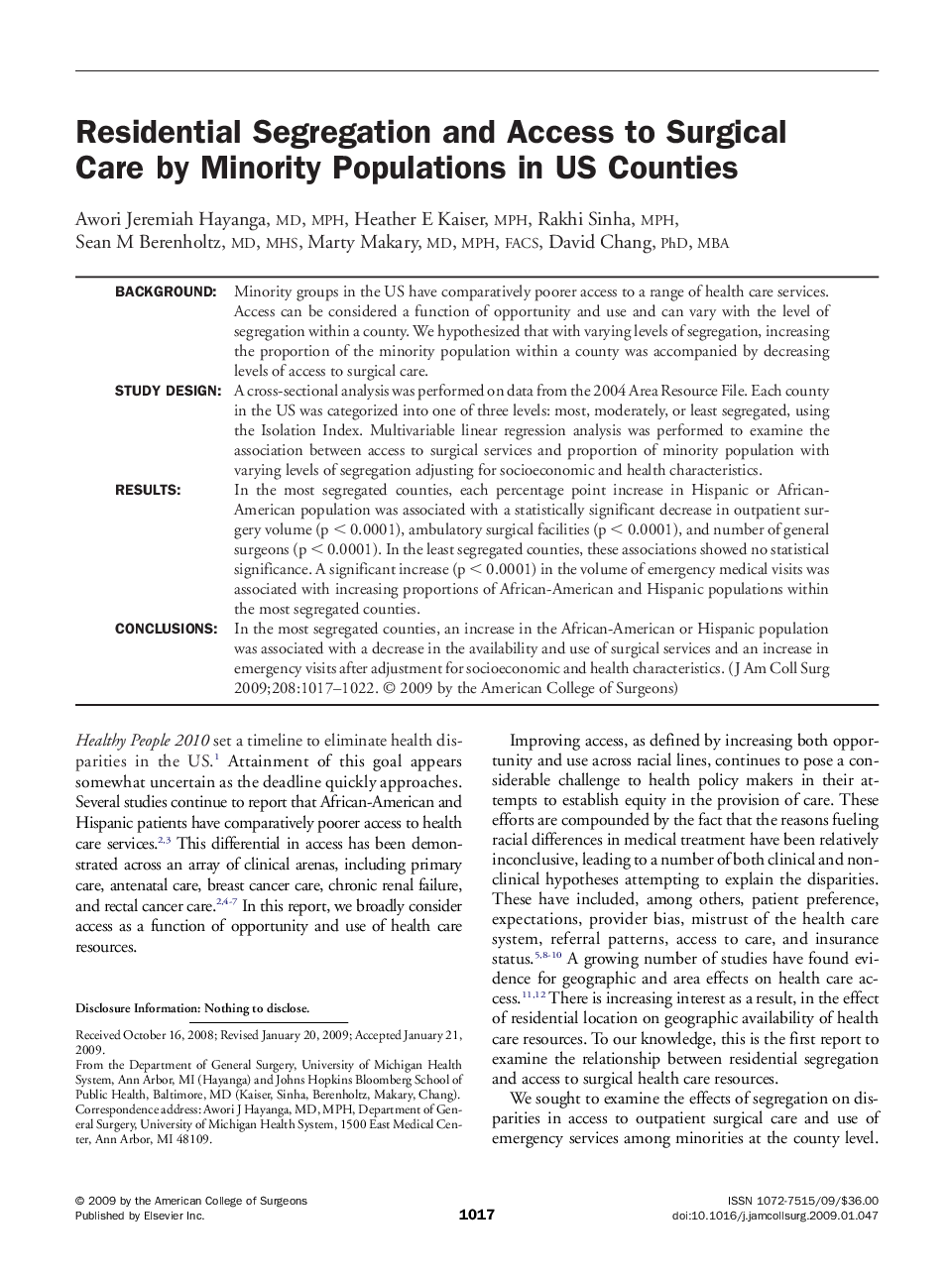| Article ID | Journal | Published Year | Pages | File Type |
|---|---|---|---|---|
| 4295352 | Journal of the American College of Surgeons | 2009 | 6 Pages |
BackgroundMinority groups in the US have comparatively poorer access to a range of health care services. Access can be considered a function of opportunity and use and can vary with the level of segregation within a county. We hypothesized that with varying levels of segregation, increasing the proportion of the minority population within a county was accompanied by decreasing levels of access to surgical care.Study DesignA cross-sectional analysis was performed on data from the 2004 Area Resource File. Each county in the US was categorized into one of three levels: most, moderately, or least segregated, using the Isolation Index. Multivariable linear regression analysis was performed to examine the association between access to surgical services and proportion of minority population with varying levels of segregation adjusting for socioeconomic and health characteristics.ResultsIn the most segregated counties, each percentage point increase in Hispanic or African-American population was associated with a statistically significant decrease in outpatient surgery volume (p < 0.0001), ambulatory surgical facilities (p < 0.0001), and number of general surgeons (p < 0.0001). In the least segregated counties, these associations showed no statistical significance. A significant increase (p < 0.0001) in the volume of emergency medical visits was associated with increasing proportions of African-American and Hispanic populations within the most segregated counties.ConclusionsIn the most segregated counties, an increase in the African-American or Hispanic population was associated with a decrease in the availability and use of surgical services and an increase in emergency visits after adjustment for socioeconomic and health characteristics.
